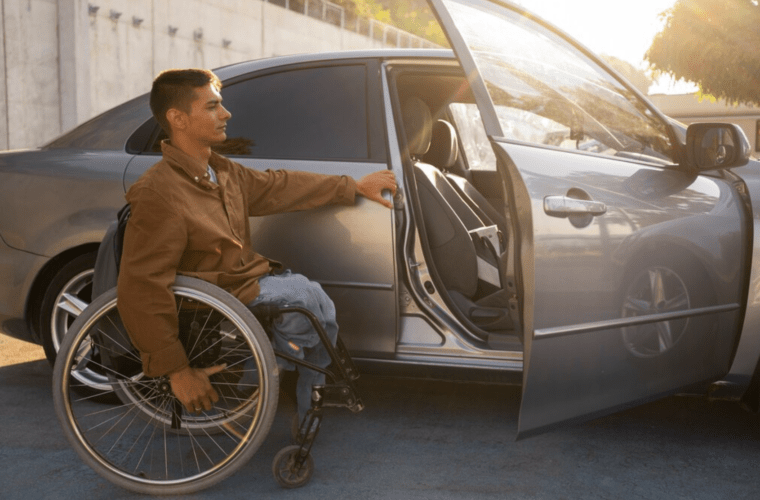
5 Disability-Friendly Car Features to Consider
When it comes to choosing a car, the needs of people with disabilities can be quite different from those without disabilities. It’s not just about getting from point A to point B; it’s about ensuring safety, comfort, and accessibility. Finding the right features can make a difference in the daily lives of individuals with disabilities.
In the past, these specific requirements posed a significant problem. Cars weren’t designed with disability-friendly features in mind, often leaving people with disabilities reliant on others for transportation. However, technological advancements and a greater focus on inclusivity have led to various accessible options that cater to various needs.
Here are five key disability-friendly car features that can make driving and riding in a car more comfortable and convenient:
Wheelchair Ramps and Lifts
Wheelchair ramps and lifts are essential for wheelchair users. They allow them to enter and exit a vehicle without needing to transfer from their wheelchair, which is crucial for individuals who cannot move out of their wheelchairs or find it extremely difficult.
These ramps and lifts provide a seamless transition into the car, making travel more accessible and less strenuous for wheelchair users. They are especially useful for accessible transportation services like some of the most reliable private car transfers adelaide has to offer, which cater to the needs of passengers with disabilities. This feature enhances independence and reduces the need for assistance from others, making day-to-day travel easier and more efficient.
One challenge with wheelchair ramps and lifts can be the required space and installation cost. Vehicles may need modifications to accommodate these features, which can be expensive. However, financial assistance programs and grants are available to help cover these costs. Additionally, some car manufacturers offer models with these features pre-installed, which can be more cost-effective.
Hand Controls
Hand controls are designed for individuals with limited or no use of their legs. These controls allow drivers to operate the brake and accelerator using their hands instead of their feet, making it possible for those with lower limb disabilities to drive safely.
Hand controls provide greater independence for drivers with disabilities, enabling them to operate a vehicle without assistance. This feature is particularly beneficial for those with conditions such as paraplegia or severe arthritis, where leg movement is restricted. Hand controls can be customised to fit individual needs, ensuring a comfortable and intuitive driving experience.
The installation of hand controls can be complex and may require professional fitting. Drivers also need to undergo proper training to use these controls safely. To address these challenges, many mobility equipment providers offer training sessions and support to help new users become confident in using hand controls.
Swivel Seats
Swivel seats rotate to make getting in and out of the car easier for individuals with mobility issues. These seats are particularly helpful for those who struggle to move from standing to sitting or vice versa.
Swivel seats enhance accessibility and comfort, making it simpler for individuals to enter and exit the vehicle without straining. This feature benefits elderly drivers, people with joint issues, or those recovering from surgery. Swivel seats can be manually operated or powered, depending on the user’s needs and preferences.
One potential challenge with swivel seats is ensuring they’re securely installed and fit well within the vehicle. Note that improper installation can lead to safety concerns. To mitigate this, it is recommended that the seats be installed by professionals who specialise in mobility modifications. Regular maintenance checks can also ensure the seats continue to function correctly and safely.
Adaptive Cruise Control
Adaptive cruise control (ACC) is an advanced driver assistance technology that automatically modifies the vehicle’s speed to keep a safe distance from cars in front. Research shows that this feature benefits drivers with disabilities who may have difficulty adjusting speed manually.
ACC enhances driving comfort and safety. It’s especially helpful for those with disabilities that affect their concentration or motor skills, such as muscular dystrophy or multiple sclerosis. By maintaining a safe distance from other vehicles, ACC helps prevent accidents and makes long drives less tiring.
One challenge of ACC is that it may not always react to every driving scenario, such as sudden stops by other vehicles. Drivers need to remain attentive and be ready to take control if necessary. To address this, users should undergo training on how to use ACC and understand its limitations effectively. Manufacturers continuously improve these systems, so updating software can also enhance performance and reliability.
Voice-Controlled Systems
Voice-controlled systems allow drivers to operate various car functions using voice commands. This feature is ideal for individuals with limited hand mobility or those who need to keep their hands on the wheel due to their disability.
Voice-controlled systems increase safety and convenience by enabling drivers to control navigation, make phone calls, adjust climate settings, and more without taking their hands off the wheel. This technology is beneficial for people with conditions like cerebral palsy or spinal cord injuries, where manual control can be challenging. Voice recognition technology has significantly improved, making these systems more reliable and user-friendly.
Voice-controlled systems may struggle with understanding different accents or speech impediments, which can be frustrating. To overcome this, users can spend time training the system to recognise their voices better. Choosing a system with high-quality voice recognition capabilities can also reduce these issues. Regular software updates can also improve the system’s accuracy and functionality.
Final Thoughts
Disability-friendly car features are now more common than before. These advancements greatly benefit children, making car rides safer and more comfortable. If you need more information or seek personalised advice, it’s always recommended to speak to professionals who can guide you towards the best solutions for your needs.
The post 5 Disability-Friendly Car Features to Consider appeared first on My Car Heaven.

